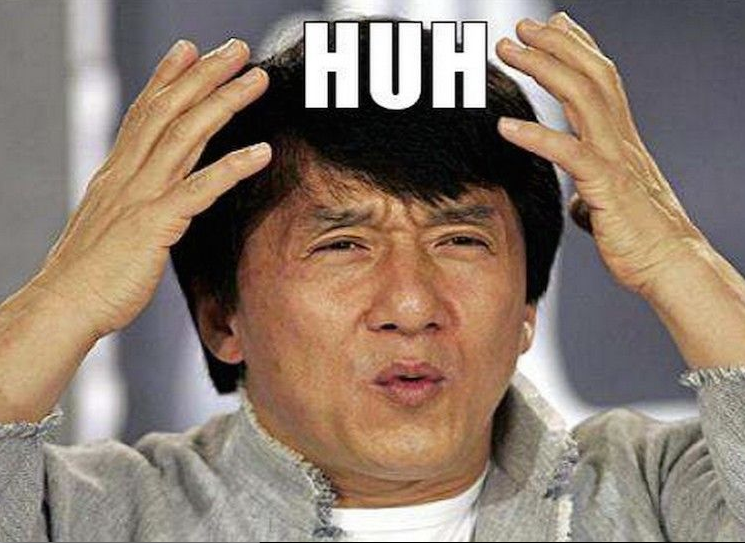My Jaw Dropped When This Became Clear …How Is Money Created?


This post isn’t about good, bad or right, wrong or should, should not. Or to do with any political opinion or allocation of Government money. This post is about understanding.
Understanding what?
Understanding federal government spending. Specifically, where does the federal government get money to spend? I was posed this question the other day: Where does the government get all it’s money to spend? Where. I discovered I could not explain the answer clearly.
Last week the Finance Minister of Canada presented a financial update, in the house of commons, forecasting near and long-term government spending. Big numbers! Numbers in the BILLIONS.
When the government spends money through various channels (CERB or infrastructure projects, or corporate wage subsidy, or anything …) money is created for spending OR taxed for spending.
So I became curious if Canada was going to finance this proposed spending through increased taxes or some other way?
And here we are …
Bank of Canada’s Vault
Let’s start here …money is not stacked up in a vault at the Bank of Canada waiting for government officials to walk in and peel off a couple billion dollar notes, and ask the teller to “provide change“.
Canada’s money supply was not created all at once and slowly added into our economy. Money can be, and is, created. Our money supply increases over time, as do other countries currencies.
As a result of the concept of “increasing money supply” this decreases purchasing power of dollars already in the economy. This is inflationary.
If we zoom in, and only focus on the supply of money, and know that government spending creates dollars injected into our economy, we can expect inflation to increase. With more dollars in the economy, there is a decrease of purchasing power for the dollars already in existence within the economy.
[The reason I “zoom in” on the supply of money, related to inflation, is I find that is simple to understand. Let’s acknowledge the reality of inflation inputs is wide and vast. This post is not about all of these other potential factors influencing inflation. So, increasing money supply = inflationary pressure.]
We have government spending money through collecting taxes or by creating dollars. When dollars are created, our money supply increases which in and of itself results in inflation. Onward …
How Money Is Created?
The government of Canada issues bonds for purchase in the “market”. A bond is a promissory note to repay the principal, plus interest, at a set time in the future.
This is interesting …the Bank of Canada (a crown corporation), along with other interested entities, purchase government bonds.
As a result of the pandemic, and subsequent government spending, the Bank of Canada has been purchasing A WHOLE LOT MORE government bonds since Spring 2020.
The government of Canada “issues” a bond for sale. The bond is purchased by the Bank of Canada. Money is created.
Let’s be clear, government officials are not delivering truckloads of purchased government bonds to the Bank of Canada for safe storage. The government bonds are electronically purchased. Money is created with keystrokes.
This is an image from the Bank of Canada website showing the government of Canada bond purchases over the past two years.
Library of Parliament is a Canadian establishment that stores parliamentary information, aggregates and distributes relevant government news and is a deep vast resource of government information in Canada. Read more about Library of Parliament here (link).
In 2015 Library of Parliament published an In Brief study of how the government of Canada creates money with the Bank of Canada. Here is a link to this 9 page PDF. I think this document outlines this process quite simply for all to understand.
Money With Keystrokes
From the Library of Parliament briefing on how governments create money …
“Since the Bank of Canada is a Crown corporation wholly owned by the federal government, the Bank’s purchase of newly issued securities from the federal government can be considered an internal transaction. By recording the new and equal amount of the asset and liability sides of its balance sheet, the Bank of Canada creates money through a few keystrokes. The federal government can spend the newly created bank deposits in the Canadian economy if it wishes.”
Doesn’t this seem like a very cozy relationship? Over the years I’ve reported to you there is a distinct separation between the Bank of Canada and the federal government. There is. And there should be! So what gives here???
“Despite the fact that the Bank of Canada’s creation of money for the federal government is achieved through de facto loans from the Bank to the government, the Bank’s governing law, the Bank of Canada Act, does not explicitly empower the Bank to make loans of this nature. Rather, the Act gives the Bank the power to “buy and sell securities issued or guaranteed by Canada or any province” as well as the power to “accept deposits from the Government of Canada and pay interest on those deposits“. Those two provisions, taken together, appear to empower the Bank to create money through the direct purchase of Government of Canada securities at debt auctions.”
How This Affects Interest Rates?
So let’s circle this back to your life. Mortgage interest rates.
The current outlook is the government and Bank of Canada are continuing to create money, through the “issuance” and purchase of government bonds, at this pace, for the foreseeable future.
Mortgage interest rates move, more or less, with yields in the bond market. The arrangement of bond purchases, by the Bank of Canada, pin bond yields to the floor – artificially. Fixed Mortgage interest rates move up and down with bond yields. As a result we have ultra low Mortgage rates. This is not the free market operating right now. Canada is experiencing stimulated, artificially low interest rates due to coordinated government intervention.
I wrote a post recently about #fomo (fear of missing out, link) related to how the bond market recently made the smallest move upward. A bond market move upward typically indicates increasing Mortgage interest rates. I found many Mortgage Brokers and Realtors singing “rates are rising song” from the rooftop. Not happening (for now).
Bond yields and Mortgage interest rates might have a tough time rising because of the forecast of government spending to continue/increase. The increase of spending means more and more government bonds will need to be “issued” and bought by the Bank of Canada to fund spending. This will continue to pin bond yields to the floor, along with Mortgage interest rates. Could things change? Of course. Governments could increase our taxes to spend, haha!
Conclusion:
Keystrokes.
This is all it takes for the government of Canada and the Bank of Canada to create money for spending in our economy.
Large scale bond purchases pin bond yields to the floor which creates a low interest rate environment.
These low rates also decrease the interest payments due on borrowed money by the government.
The money supply increases quite simply (magically). I find it all rather fascinating. Read about this directly from Library of Parliament (link)
What does this mean for Real Estate prices in Calgary? Blog post here (link). Hint, they are primed to increase.
Questions about your Mortgage? Reach out chad@canadamortgagedirect.com or 403-809-5447
Talk soon,
Chad Moore
Recent Posts
Calgary Market Update—March 2025 Data
Here are some Calgary Real Estate numbers, across all property types, out of the gate for…
Interest Rates Up Or Down?
Hey Guys! Tariffs are here. Now what? Tiff Macklem, governor of the Bank of Canada, gave…
Bank of Canada Hot Mic Moment
Hey Guys! The Bank of Canada publishes "meeting deliberation notes" relating to the discussion of raising,…
Banker’s Damaging Admission
When the governor of the Bank of Canada speaks, we listen! Tiff Macklem, governor at…
January 2025 Market Stats
Let's look back at January 2025 Calgary Real Estate Board (CREB) data to make sense…
Mortgage Interest Rate Review
Hey Guys! Here's an example of how the Bank of Canada is in a balance…


